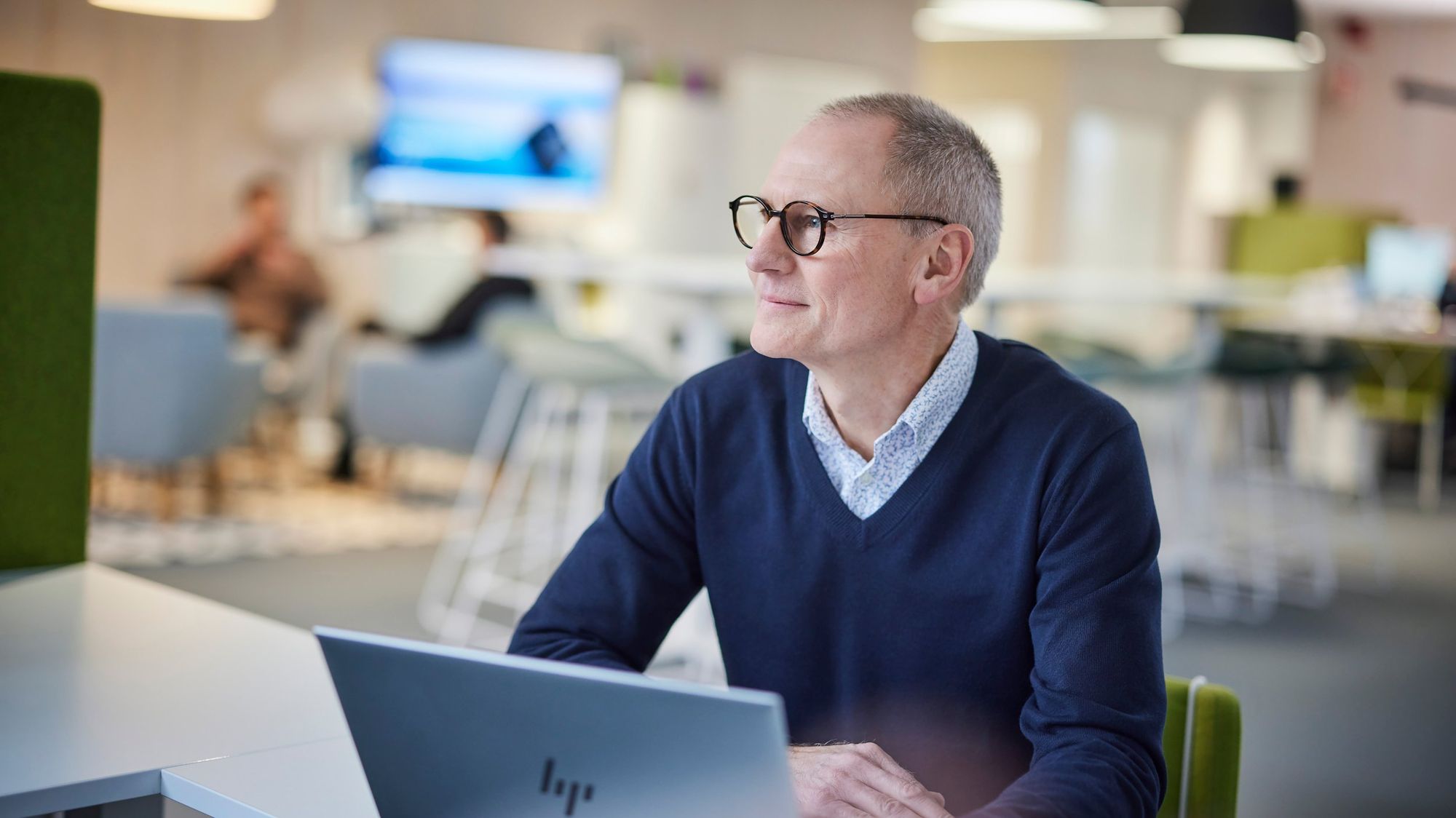The need for light changes with age
Lighting standards exist to ensure we have a good work environment that makes us feel good. We are facing a challenge, however: these standards are tailored to 40-year-olds. We actually need different amounts of light, both visually and biologically, depending on our age.

Like a dirty window
The reason for this is mechanical – the lens and retina age and their function are impaired. The most common result is that the lens yellows, thereby letting less light through. The older we get, the more our sensitivity decreases and the more light we need in order to cope with visual tasks. This can be likened to looking out of a dirty window. The brightness in the room simply needs to be increased to meet the visual needs and, as a natural consequence, the biological needs related to the circadian rhythm. A 40-year-old needs twice as much light as a 20-year-old, and a 60-year-old needs four times as much.
When the standard is not enough
There is consequently every reason to pay attention to the requirements in the standard when it comes to who is going to be spending time in the premises that are to be illuminated. Is it a school for children and young people? Is it an office – and, if so, what will the age breakdown be among the employees? Is it a hospital or a care facility – such as a nursing home – in which both staff and care recipients have particular needs? Research shows, for example, that people who suffer from dementia may benefit from specially designed lighting. Right from the planning stage, it is therefore important for property owners, tenants, employers and other business managers to give consideration to the age and lighting needs of the people who will be spending time in the environment, in relation to the activities that are to be carried out.
With Human Centric Lighting, we are simply putting people at the centre.